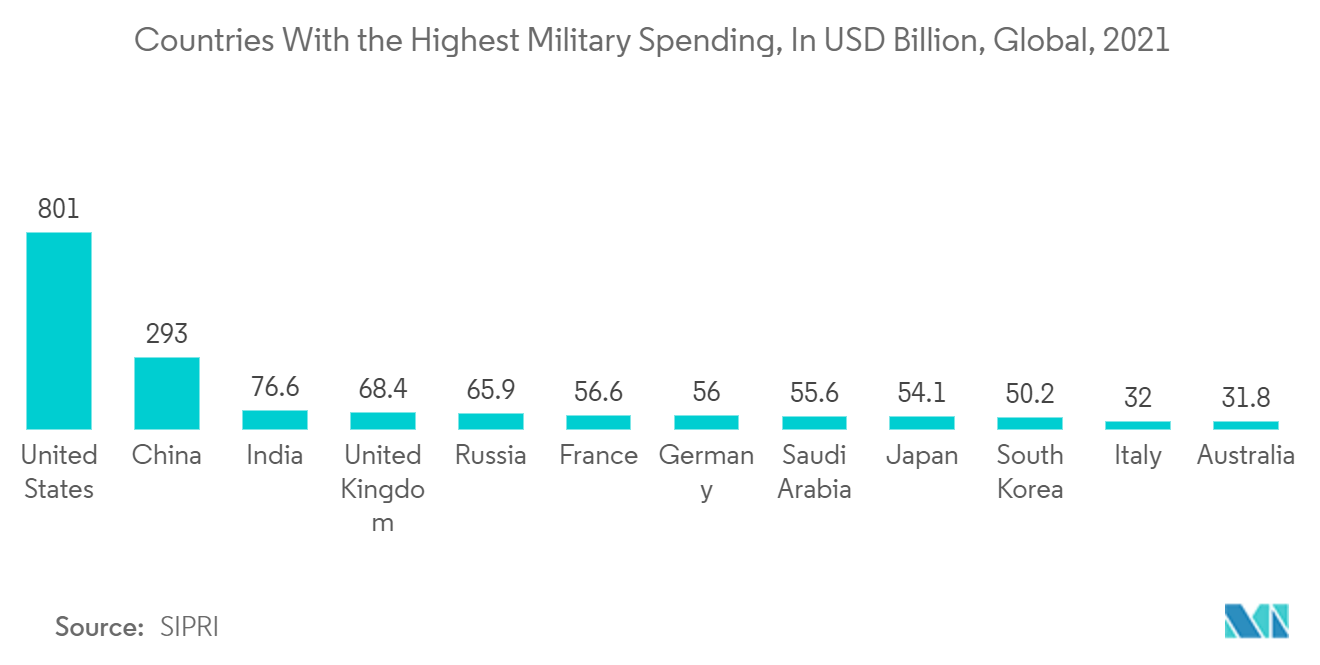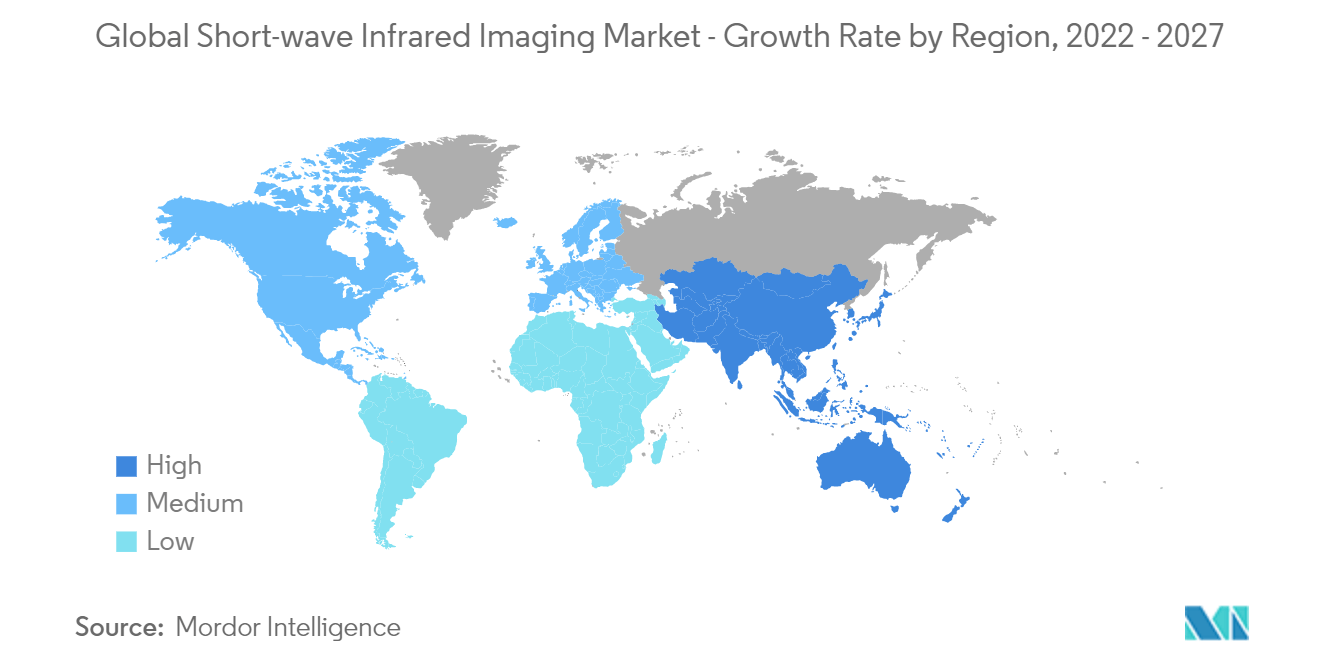Market Trends of Short-wave Infrared Imaging Industry
This section covers the major market trends shaping the Short-wave Infrared Imaging Market according to our research experts:
Military & Defense Segment is Expected to Have a Significant Growth
- Infrared imaging is used in defense applications to enable high-resolution vision and identification in near and total darkness. The infrared (IR) wavelengths are essential for military and defense research and development because surveillance and targeting occur at night.
- The SWIR region bridges the gap between visible wavelengths and peak thermal sensitivity of infrared, scattering less than visible wavelengths and detecting low-level reflected light at longer distances, which is ideal for imaging through smoke and fog. Moreover, SWIR cameras are useful security and surveillance devices, sometimes by themselves and often combined with other imagers.
- In May 2021, a Melbourne-based firm received a contract to equip the Army drones with next-generation surveillance sensors to provide stable images day or night using infrared cameras. The sensor technology aims to enhance intelligence, surveillance, and reconnaissance (ISR) capability by leveraging an imaging system that uses electro-optical, short wave, and medium wave infrared cameras, along with laser range finding and target designation technology.
- Moreover, in November 2021, DARPA hired three groups to develop enhanced direct-view night-vision systems of a size and weight near those of typical eyeglasses as a part of its ENVision program. These three organizations will develop small and lightweight night-vision eyeglasses to extend visual access beyond near-infrared to include short-wave, mid-wave, and long-wave infrared spectral bands through a common aperture giving users access to spectral ranges from 1.5 to 12 microns.
- According to the UK parliament, defense spending in 2020/21 was GBP 42.4 billion in cash terms. This is a nominal rise of GBP 2.5 billion over the previous year and a real increase of GBP 1.7 billion. As a result, the yearly defense budget in 2024/25 will be GBP 6.2 billion more in cash terms than in 2020/21. However, the real worth of this spending rise is lower, especially in light of growing inflation. Defense spending is estimated to rise by GBP 1.5 billion when adjusted for inflation.

North America Accounts For the Largest Market Share
- US defense spending is the highest in the world and one of the prominent markets for SWIR cameras and technology. According to the US Department of Defense, compared to the FY 2020 authorized amount of USD 704.6B (excluding natural disaster emergency funds), the President's budget request of USD 705.4B represents a minor gain of around 0.1%. Given this reduced funding level, the Department made several difficult decisions to ensure that resources are focused on the Department's top priorities.
- To facilitate that decision-making, Secretary of Defense Esper launched a comprehensive Defense-Wide Review, which resulted in nearly USD 5.7 billion in savings for FY 2021, USD 0.2 billion in Working Capital Fund efficiencies, and another USD 2.1 billion in activities and functions realigned to the Services. This program enabled the Department to better resource higher-level National Defense Strategy (NDS) priorities.
- Companies in the region are seeking various investments from national and international firms to boost their infrared imaging business. For instance, in October 2021, SWIR Vision Systems Inc., a provider of image sensor solutions for industrial automation, autonomous vehicles, and other applications, has raised USD 5 million, which will be used to advance the company's CQD sensor solutions to grow the company's SWIR camera business in the global industrial and defense markets.
- In May 2021, Elbit Systems announced the next generation of its Advanced Multi-Sensor Payload System (AMPS NG), primarily adding Shortwave Infrared (SWIR) technology into the existing day CCD (Charge-Coupled Device) TV sensors and a unique, highly capable dual FLIR sensor design.
- Furthermore, in January 2022, TriEye, the mass-market Short-Wave Infrared (SWIR) sensing technology provider, announced the collaboration with Hitachi Astemo, a supplier of automotive products. The companies will work together to further enhance the capabilities of advanced driver assistance systems (ADAS) for adverse weather and low-light conditions by accelerating the launch of TriEye technology.


